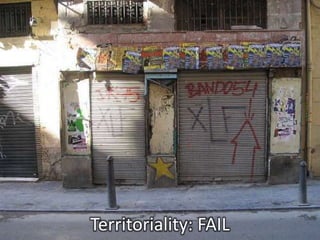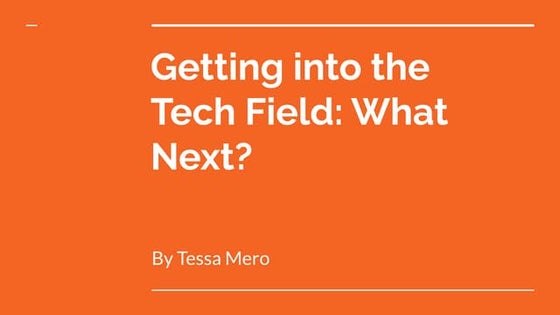Cptedreview 100417135250-phpapp02
- 1. A Quick Review of CPTED Strategies (Crime Prevention Through Environmental Design) By: Russell James, J.D., Ph.D., Asst. Professor, Dept. of Housing & Consumer Economics, University of Georgia
- 2. The criminalŌĆÖs SAT questionsSurveillance (Will I be seen?)Access (Can I get in and out)? Territoriality (Does anyone care what happens here?)
- 3. ResearchSurveillance (Will I be seen?)
- 4. ŌĆ£burglarized houses had less visual access to immediately neighboring houses than did non-burglarized housesŌĆØBrown, B. (University of Utah), Altman, B. (University of Utah). 1983. Territoriality, defensible space and residential burglary: an environmental analysis, Journal of Environmental Psychology, 3(3), 203-20.
- 5. ŌĆ£Convenience stores experienced mean annual robbery rate reductions after installation of CCTV systems (-23%); installation of video cameras with monitors (-54%)ŌĆØC. Casteel (UCLA) & C. Peek-Asa (UCLA). 2000. Effectiveness of crime prevention through environmental design (CPTED) in reducing robberies. American Journal of Preventative Medicine, 18, 99-115, p. 110
- 6. Office beverages available with payment on an ŌĆ£honorŌĆØ system.Picture above payment instructions rotated weekly.Payments were higher when picture of eyes was posted.M. Bateson, D. Nettle & G. Roberts (2006). Cues of being watched enhance cooperation in a real-world setting. Biology Letters 2, 412ŌĆō414.
- 7. Two groups with two computer backgrounds. Each person receives $10. Computer question: Do you want to share any of it with another (anonymous) participant?ABK. J. Haley (UCLA), D.M.T. Fessler (UCLA). 2005. NobodyŌĆÖs watching? Subtle cues affect generosity in an anonymous economic game. Evolution and Human Behavior, 26, 245ŌĆō256
- 8. K. J. Haley (UCLA), D.M.T. Fessler (UCLA). 2005. NobodyŌĆÖs watching? Subtle cues affect generosity in an anonymous economic game. Evolution and Human Behavior, 26, 245ŌĆō256
- 9. ResearchAccess (Can I get in and out)?
- 10. ŌĆ£Burglarized houses had fewer fences and locked gates surrounding the yard than did non-burglarized houses.ŌĆØBrown, B., Altman, B. (1983). Territoriality, defensible space and residential burglary: an environmental analysis, Journal of Environmental Psychology, 3(3), 203-20.
- 11. Preventing access by adding chain link fencing and lighting to lower levels of this parking garage led to 50% drop in reported crime.Tseng, C.-H. (Ohio State U.), Duane, J. (Ohio State U.), & Hadipriono, F. (Ohio State U.). 2004. Performance of Campus Parking Garages in Preventing Crime. Journal of Performance of Constructed Facilities, 18(1), 21-28.
- 12. Territoriality (Does anyone care what happens here?)Research
- 13. ŌĆ£burglarized houses had fewer symbolic barriers characteristic of primary territories (i.e., fewer markers depicting the identity of the territory owners)ŌĆØBrown, B. (University of Utah), Altman, B. (University of Utah). 1983. Territoriality, defensible space and residential burglary: an environmental analysis, Journal of Environmental Psychology, 3(3), 203-20.
- 14. In a study of 400 convenience store robberies, one significant difference between robbed and non-robbed stores was distance from nearest graffitiS. A. Hendricks, D. P. Landsittel, H. E. Amandus, J. Malcan, & J. Bell. (1999) A matched case-control study of convenience store robbery risk factors. Journal of Occupational and Environmental Medicine, 41(11), 995-1004
- 15. ŌĆ£Does it pass the SAT?ŌĆØVisual ExamplesSurveillance (Will I be seen?)Access (Can I get in and out)? Territoriality (Does anyone care what happens here?)
- 16. Will I be seen?
- 18. Can I get in and out?
- 19. Access: FAIL
- 20. Does anyone care what happens here?
- 22. Does anyone care what happens here?Territoriality: FAIL
- 23. Can I get in and out?Access: FAIL
- 24. Does anyone care what happens here?
- 26. Access: Can I get in and out?
- 27. Territoriality impacts AccessIf no one cares what happens here, is it less risky to try opening the door with a crowbar or bolt cutter?
- 28. Access barriers alone can be overcomeSurveillance + Access + Territoriality (SAT) work together
- 29. ACCESS: Does the fence make it harder to get in and out?
- 30. SURVEILLANCE: Does the fence make it less likely I will be seen when attempting to break in through a back door?
- 31. Surveillance + Access + Territoriality may impact each other.
- 32. Does anyone care what happens here?
- 33. The fence says ŌĆ£MaybeŌĆØ. Everything else says ŌĆ£NoŌĆØ
- 34. Does anyone care what happens here?
- 35. TERRITORIALITY: High level maintenance. Defined borders.
- 36. Short decorative fencing can enhance territoriality inside the fence without disconnecting from the surrounding neighborhood
- 37. Short decorative fencing can enhance territoriality inside the fence without disconnecting from the surrounding neighborhood
- 38. Short fencing, even if solid, creates no surveillance problems.
- 39. As fences get higher, the access barrier increases, but the risk of visually disconnecting from the neighborhood also grows
- 40. Does anyone care what happens here INSIDE the fence?
- 41. Does anyone care what happens here OUTSIDE the fence?
- 42. High fences may diminish territoriality outside the fence
- 43. High solid fencesIndicates lack of territoriality outside of wallsReduces natural surveillanceCan anyone see what happens outside the fence?
- 44. High solid fencesIndicates lack of territoriality outside of wallsReduces natural surveillanceDoes anyone care what happens outside the fence?
- 45. High solid fencesIndicates lack of territoriality outside of wallsReduces natural surveillanceHigh solid fences may create spaces with little surveillance or territoriality
- 46. Some high fences control access, but fail the S.A.T. by Blocking surveillanceSending a clear message that the area is dangerous, crime is accepted, and no one cares what happens outside the wall
- 47. Making the chain link fence opaque blocks surveillance and permits graffiti showing a lack of external territoriality.
- 48. With proper design and maintenance, high fences can limit access without damaging surveillance or territoriality
- 49. A high fence blocking access without damaging surveillance or territoriality
- 50. Spikes can add a visceral element of access reduction that is still decorative and residential
- 51. Of course, you can go too far with anything!
- 52. Window bars limit access, but may also send a negative territoriality message about neighborhood safety.
- 53. Glass block can create security similar to window bars but without the stigma
- 54. Most burglary entries do not occur through the front door, often because of natural surveillance.
- 55. Open access to side or rear entry points where there is no natural surveillance make for more attractive burglary entrances.
- 56. Access barriers to side or rear entrance can reduce the risk
- 57. A very short barrier may provide insufficient access control
- 58. As barriers rise, access is reduced
- 59. Tall opaque barriers limit access, but may also eliminate natural surveillance
- 60. The line of sight for entry points is critical.
- 61. Am I visible to outsiders here?
- 62. Am I visible to outsiders here?
- 63. Am I visible to outsiders here?
- 64. Am I visible to outsiders here?
- 65. Consider the sight-lines in this aerial shot of a new group of duplexes
- 66. Front Entrance / WindowsSide WindowsRear Entrance / WindowsWhat are the sight lines for the potential entry points in this unit?
- 67. 10 residences have sight lines to the rear entryWhat are the sight lines for the potential entry points in this unit?
- 68. 16 residences have sight lines to the front entryWhat are the sight lines for the potential entry points in this unit?
- 69. 11 residences have sight lines to side windowWhat are the sight lines for the potential entry points in this unit?
- 70. Rear Entrance / WindowsSide Entrance/ WindowsFront Entrance / WindowsWhat are the sight lines for the potential entry points in this unit?
- 71. 2residences have sight lines to rear entranceWhat are the sight lines for the potential entry points in this unit?
- 72. 0residences have sight lines to side windowWhat are the sight lines for the potential entry points in this unit?
- 73. Zone outside residence where sight lines are covered by wooded area with link to walking trailWhat are the sight lines for the potential entry points in this unit?
- 74. Which residence has better SAT scores?
- 75. What natural surveillance issue best predicted convenience store robberies?C. Casteel (UCLA) & C. Peek-Asa (UCLA). 2000. Effectiveness of crime prevention through environmental design (CPTED) in reducing robberies. American Journal of Preventative Medicine, 18, 99-115, p. 110
- 76. C. Casteel (UCLA) & C. Peek-Asa (UCLA). 2000. Effectiveness of crime prevention through environmental design (CPTED) in reducing robberies. American Journal of Preventative Medicine, 18, 99-115, p. 110Visibility from outside the store to inside the store was the most important sight line
- 77. C. Casteel (UCLA) & C. Peek-Asa (UCLA). 2000. Effectiveness of crime prevention through environmental design (CPTED) in reducing robberies. American Journal of Preventative Medicine, 18, 99-115, p. 110Visibility from outside the store to inside the store was a more significant predictor of convenience store robberies than the number of clerks or the proximity to drug traffic, gangs, or subsidized housing.
- 78. At night, surveillance depends on lighting.
- 79. Of course, surveillance can be blocked by both darkness and solid barriers.
- 80. line of site; access outLighting alone may not overcome natural barriers to surveillance
- 81. Lighting can also be important during the day, especially where lines of sight are limited
- 82. Neighborhood watch signs may improve territoriality by indicating that people care what happens in the area
- 83. Of course, if no one really cares about the area, then there is no real community ownership or territoriality, and a sign may not have the desired effect!
- 84. Territoriality fails when it appears that no one is maintaining an area. No one is claiming ownership. In short, no one cares what happens there.
- 85. What signals do you get that territoriality appears weak here?
- 86. Closed stairwells have low natural surveillance and easy access for both entry and escape
- 87. Combined with territoriality deficiencies, stairwells can create CPTED problem areas.
- 88. Design solutions can improve the natural surveillance for stairwells
- 89. Open stairwells have strong natural surveillance properties
- 90. All ranges of natural surveillance levels are possible for stairwells depending upon the design solution chosen
- 91. ŌĆ£replacing bathroom entrance doors with right-angle entrances permit the warning sounds of crime to travel more freely and reduce the sense of isolationŌĆØAuditory SurveillanceSommer, R. (1983). Social design: Creating buildings with people in mind. Englewood Cliffs, NJ: Prentice-Hall
- 92. Cul-de-sacs may limit access, making visiting cars more noticeable
- 93. Cul-de-sacs make automobile escape more problematic as there is only one exit route
- 94. Street closures can provide similar access results
- 95. Pedestrian traffic can also be limited with street closures
- 96. High rise buildings provide weaker surveillance of street level activity because of structural separation, distance separation, and sound separation.This separation also limits the sense of territoriality over street level activities.
- 97. Mid rise balconies create stronger surveillance and territoriality, connecting residents with street level.
- 98. Mid-rise balcony neighborhoods create safer street level areas with high levels of perceived surveillance and perceived territoriality
- 99. Presentation by Russell James III, J.D., Ph.D., Asst. Professor, Dept. of Housing & Consumer Economics, University of Georgia.Dr. JamesŌĆÖ research has been published in a variety of housing and design related academic journals including: Environment & Behavior; Housing Policy Debate; Journal of Urban Planning & Development (ASCE); Journal of Performance of Constructed Facilities (ASCE); Housing, Theory, and Society; Housing & Society; Journal of the Community Development Society╠²╠²╠²╠²╠²Please feel free to use any of these slides for any non-commercial purposes. All pictures used in this presentation are creative commons licensed, have been purchased with rights to allow this usage, are from MS PowerPoint or are the authorŌĆÖs own photographs. Citations for all creative commons licensed photos are in the notes to each slide.
Editor's Notes
- #5: http://www.flickr.com/photos/joeolivas/4014325431/
- #17: http://www.flickr.com/photos/exquisitur/2704479961/
- #18: http://www.flickr.com/photos/exquisitur/2704479961/
- #19: http://www.flickr.com/photos/exquisitur/2704479961/
- #20: http://www.flickr.com/photos/exquisitur/2704479961/
- #21: http://www.flickr.com/photos/exquisitur/2704479961/
- #22: http://www.flickr.com/photos/exquisitur/2704479961/
- #23: http://www.flickr.com/photos/loneprimate/312183404/
- #24: http://www.flickr.com/photos/loneprimate/312183404/
- #25: Picture from http://www.flickr.com/photos/brentgranby/407471774/
- #26: Picture from http://www.flickr.com/photos/brentgranby/407471774/
- #27: Picture from http://www.flickr.com/photos/brentgranby/407471774/
- #28: Picture from http://www.flickr.com/photos/brentgranby/407471774/
- #29: http://www.flickr.com/photos/culturesubculture/359219403/
- #30: http://www.flickr.com/photos/annethelibrarian/2664724475/
- #31: http://www.flickr.com/photos/annethelibrarian/2664724475/
- #32: http://www.flickr.com/photos/annethelibrarian/2664724475/
- #33: http://www.flickr.com/photos/bbsc30/210525558/
- #34: http://www.flickr.com/photos/bbsc30/210525558/
- #35: http://www.flickr.com/photos/mcgervey/222146608/
- #36: http://www.flickr.com/photos/mcgervey/222146608/
- #37: http://www.flickr.com/photos/question_everything/3678344268/
- #38: http://www.flickr.com/photos/jotor/234184158/
- #39: http://www.flickr.com/photos/sweetknez23/3910301312/sizes/o/
- #40: http://www.flickr.com/photos/tifotter/3547185045/
- #41: http://www.flickr.com/photos/jessicareeder/4025755857/
- #42: http://www.flickr.com/photos/jessicareeder/4025755857/
- #43: http://www.flickr.com/photos/jessicareeder/4025755857/
- #44: http://www.flickr.com/photos/xerostomia/553854589/sizes/l/
- #45: http://www.flickr.com/photos/xerostomia/553854589/sizes/l/
- #46: http://www.flickr.com/photos/xerostomia/553854589/sizes/l/
- #47: http://www.flickr.com/photos/baxterclaws/2369867193/
- #48: http://www.flickr.com/photos/caffeina/2142925819/
- #49: http://www.flickr.com/photos/wallyg/238936072/
- #50: http://www.flickr.com/photos/cobalt/516643129/
- #51: http://www.flickr.com/photos/rawhead/4332709704/
- #52: http://www.flickr.com/photos/grantmac/295215008/
- #53: http://www.flickr.com/photos/mikelowe/12733857/
- #54: http://www.flickr.com/photos/timcaynes/85580456/
- #56: http://www.flickr.com/photos/belldesign/512370773/
- #57: http://www.flickr.com/photos/terwilliger911/3584158080/sizes/o/
- #58: http://www.flickr.com/photos/eraphernalia_vintage/2752921672/
- #59: http://www.flickr.com/photos/professorcooper/2295942703/
- #60: http://www.flickr.com/photos/seanabrady/13736510/
- #61: http://www.flickr.com/photos/dklimke/4498665798/
- #62: http://www.flickr.com/photos/dklimke/4498665798/
- #63: http://www.flickr.com/photos/dklimke/4498665798/
- #64: http://www.flickr.com/photos/dklimke/4498665798/
- #65: http://www.flickr.com/photos/dklimke/4498665798/
- #76: http://www.flickr.com/photos/wilhelmja/2106023507/
- #77: http://www.flickr.com/photos/kevinsteele/123312049/sizes/l/
- #78: http://www.flickr.com/photos/zenobia_joy/3913121985/sizes/l/
- #79: http://www.flickr.com/photos/pyxopotamus/3367838089/
- #80: http://www.flickr.com/photos/pkmntrainerj/2821840377/
- #81: http://www.flickr.com/photos/djs1021/3321138663/
- #82: http://www.flickr.com/photos/go-lili/2766342250/
- #83: http://www.flickr.com/photos/quitepeculiar/124488274/
- #84: http://www.flickr.com/photos/voteprime/3735154598/sizes/l/
- #85: http://www.flickr.com/photos/didmyself/3055980839/sizes/l/
- #86: http://www.flickr.com/photos/hojusaram/2322990301/
- #87: http://www.flickr.com/photos/editor/246835898/sizes/l/
- #88: http://www.flickr.com/photos/31288764@N08/2973427460/
- #89: http://www.flickr.com/photos/rwphoto/3666032791/
- #90: http://commons.wikimedia.org/wiki/File:Student_center_York_University_Goddess_of_Democracy.jpg
- #91: http://www.flickr.com/photos/pleasewait/2314912056/
- #92: http://www.flickr.com/photos/brownphotography/1066293935/sizes/l/
- #93: http://www.flickr.com/photos/anndouglas/478506693/
- #94: http://www.flickr.com/photos/jillysp/3165270599/
- #95: http://www.flickr.com/photos/giveawayboy/3352623342/
- #96: http://www.flickr.com/photos/dmcl/349526384/
- #97: http://www.flickr.com/photos/daveynin/2479244769/
- #98: AuthorŌĆÖs personal photos taken in Tarragona, Spain






























































































































